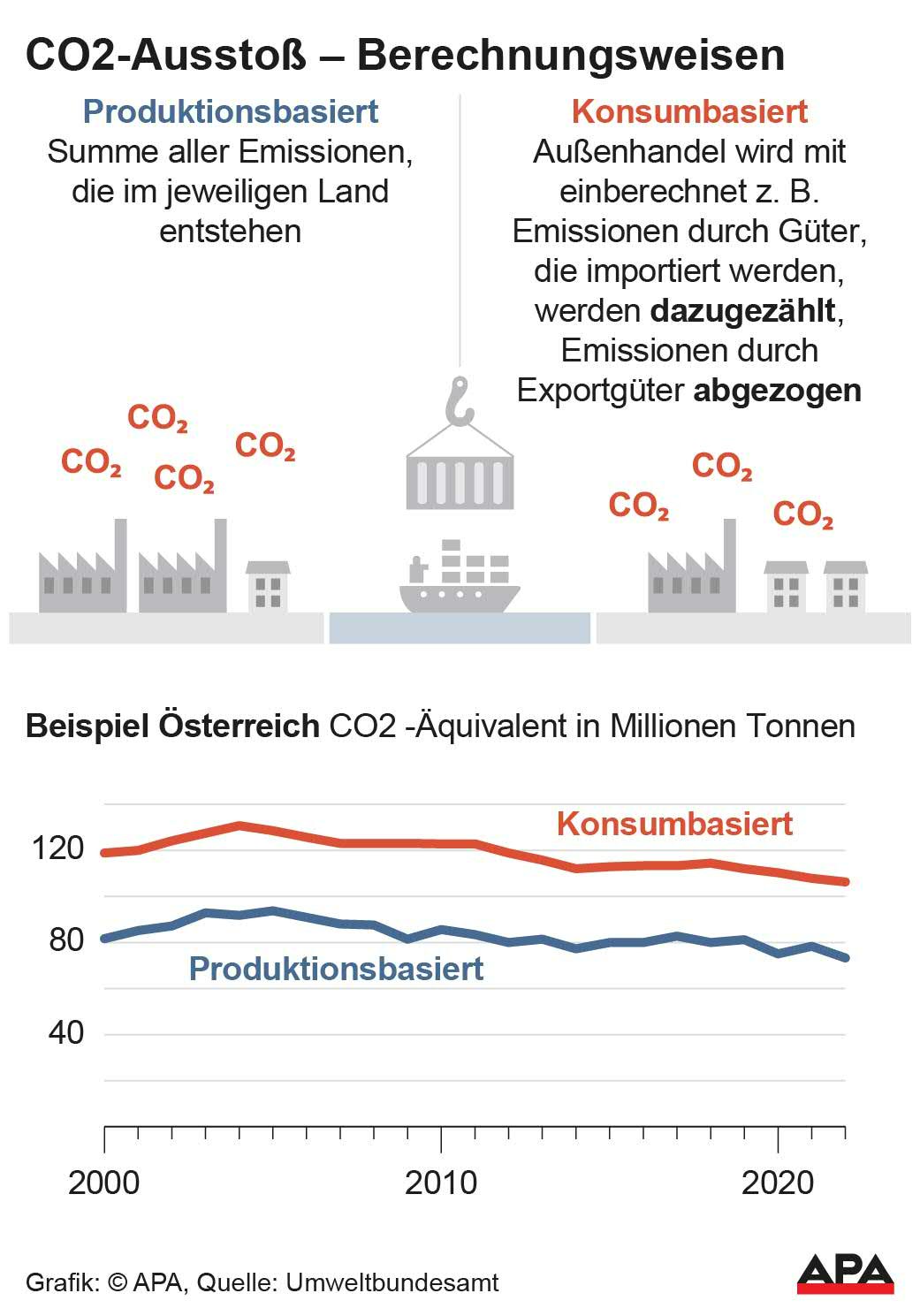Domestic Consumption Causes Large CO2 Footprint

A T-shirt sold in Austria illustrates the difference between the calculation methods for the carbon footprint: The production-based method assigns emissions from manufacturing in China to that country. The consumption-based method considers the entire lifecycle of the T-shirt, from cotton cultivation in India to processing in China, to sale, washing, and disposal in Austria, and also takes into account emissions from imported goods and services.
Carbon Footprint: Consumption-Based Emissions Significantly Higher
These different approaches lead to significantly varying results. According to the Environment Agency Austria, the consumption-based calculation of Austria's emissions is about 40 to 50 percent higher than the production-based values. While 68.7 million tons of CO2 equivalent were emitted within Austria in 2023, the actual footprint - if imports are included - would be around 100 million tons. "The greenhouse gas problem in Austria is much larger in terms of consumption - and the need for action is all the more urgent," said Gerfried Jungmeier from the research company Joanneum Research in an interview with APA. He leads the working group on consumption-based greenhouse gas calculation at the Climate Change Center Austria (CCCA).

Nevertheless, according to Sigrid Stagl, an economist at the Vienna University of Economics and Business (WU), both types of CO2 calculation are necessary. The production-based method assigns emissions to the place of their origin and enables governments to act specifically. She recommends that governments focus on climate communication and measures that address everyone. "It's great when you receive subsidies for PV systems, heat pumps, or electric vehicles. However, people who have no control over their roof or heating system do not feel addressed," Stagl told APA.
Global Inequalities and Structural Responsibility
To make climate protection appeal to more people, the WU researcher believes that social inequality in CO2 emissions must also be addressed more strongly. Higher incomes generally mean more consumption, more frequent air travel, and greater energy needs. According to a study by the Chamber of Labor (AK), the richest 10 percent of households are responsible for 56 percent of emissions due to corporate ownership and investment decisions.
Regardless of individual CO2 emissions, experts agree that the responsibility for reducing greenhouse gases cannot lie with the individual. "You cannot completely shift the responsibility onto individuals - sustainable living requires infrastructures," said Stagl. This includes physical structures like rail networks and public transport as well as social structures - for example, whether social prestige increases if you ride a bicycle instead of an SUV. Additionally, institutional incentives are necessary, such as the climate ticket.
The international community attempts to curb the advancing climate change at the annual United Nations (UN) World Climate Conference. The topic of climate justice between those countries historically responsible for the largest emissions and those that bear little responsibility but are often particularly affected by the impacts of the climate crisis is repeatedly addressed.
(APA/Red)
This article has been automatically translated, read the original article here.
Du hast einen Hinweis für uns? Oder einen Insider-Tipp, was bei dir in der Gegend gerade passiert? Dann melde dich bei uns, damit wir darüber berichten können.
Wir gehen allen Hinweisen nach, die wir erhalten. Und damit wir schon einen Vorgeschmack und einen guten Überblick bekommen, freuen wir uns über Fotos, Videos oder Texte. Einfach das Formular unten ausfüllen und schon landet dein Tipp bei uns in der Redaktion.
Alternativ kannst du uns direkt über WhatsApp kontaktieren: Zum WhatsApp Chat
Herzlichen Dank für deine Zusendung.








